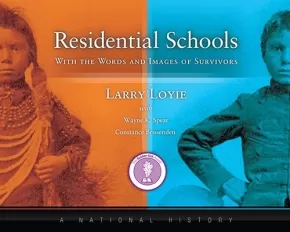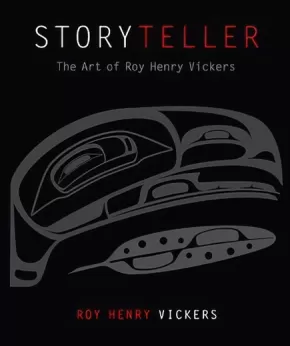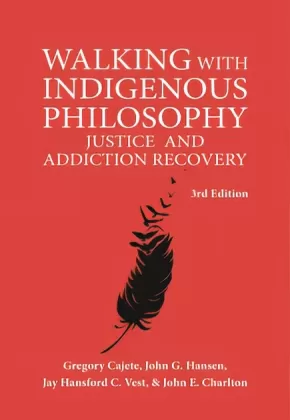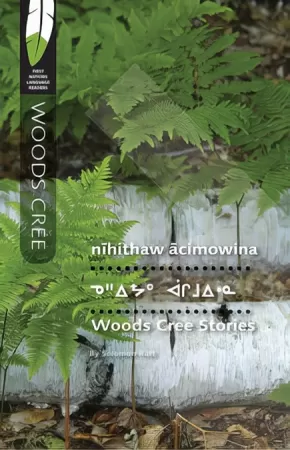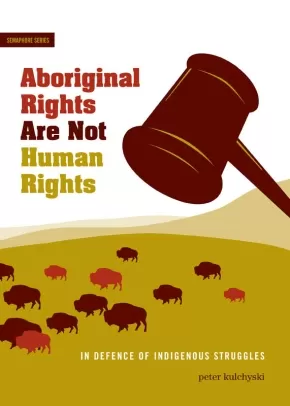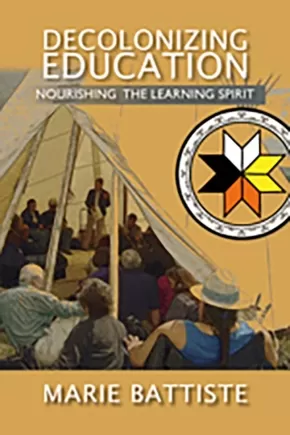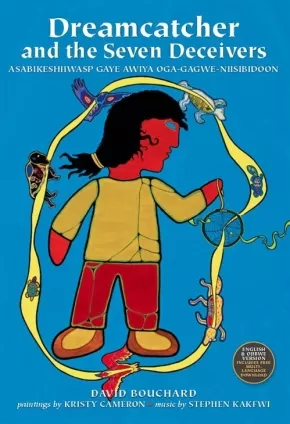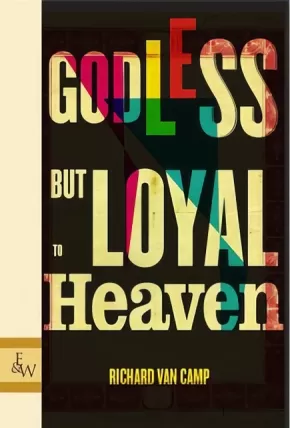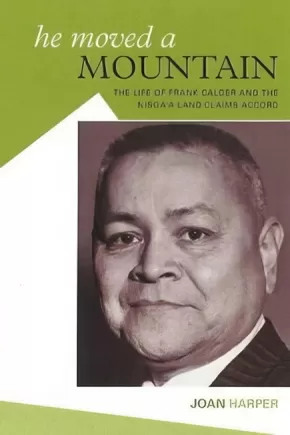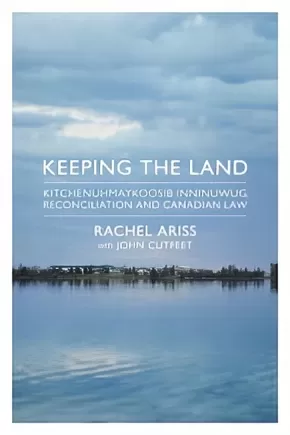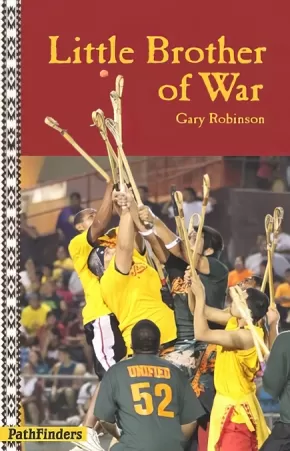
First Nations
661
-
675
of
786 Results;
Sort By
Go To
of 53
Residential Schools, With the Words and Images of Survivors
$34.95
Format:
Hardcover
Text Content Territories:
Indigenous Canadian;
ISBN / Barcode: 9780993937101
Synopsis:
Synopsis:
Residential Schools, With the Words and Images of Survivors, A National History honours the survivors, the former students, who attended residential schools. Designed for the general reader this accessible, 112-page history offers a first-person perspective of the residential school system in Canada, as it shares the memories of more than 70 survivors from across Canada as well as 125 archival and contemporary images (65 black & white photographs, 51 colour, some never before published).
This essential volume written by award-winning author Larry Loyie (Cree), a survivor of St. Bernard Mission residential school in Grouard, AB, and co-authored by Constance Brissenden and Wayne K. Spear (Mohawk), reflects the ongoing commitment of this team to express the truths about residential school experiences and to honour the survivors whose voices are shared in this book.
Along with the voices, readers will be engaged by the evocative, archival photographs provided by the Shingwauk Residential Schools Centre with the assistance of curator Krista McCracken. The book begins with the moving introduction by Larry Loyie, and moves to seven chapters that explore the purpose of this school system; cultures and traditions; leaving home; life at school the half-day system; the dark side of the schools; friendship and laughter coping with a new life; changing world–the healing begins; and an afterword. A detailed, full colour map showing residential schools, timeline with key dates, glossary, and a helpful index (including names of survivors and schools) make this vital resource a must-have for secondary, college, and universities, libraries, and the general reader.
Reviews
"A broad and comprehensive review of the history of First Nations, Métis, and Inuit peoples in Canada told from the perspective of First Peoples in a very accessible way. Any educator, regardless of personal background or heritage, would find this timely resource very useful in any classroom." — Gary Fenn and Domenic Bellissimo, executive assistants, Ontario Secondary School Teachers’ Federation
"Written with a gentle hand, this book describes a history that few Canadians understand or even know about. From the first page, those in search of the truth are engaged in a journey of learning, as they come to understand the true battle of Aboriginal peoples to preserve their cultures and pride. This story is a true account of resiliency and human spirit." — Tracy Zweifel, executive director, Sagitawa Friendship Society, Alberta
Awards
- 2016 Winner of Golden Oak award in Ontario's Forest of Reading program
Educator Information
This must-have resource includes a detailed, full-colour map showing residential schools, a timeline with key dates, and a glossary.
Recommended for grades 7-12, but would still be useful for adults and college/university courses studying residential schools and Indigenous history.
This book has been evaluated and approved by ERAC (Educational Resource Acquisition Consortium, British Columbia).
Additional Information
112 pages | 10.43" x 8.26"
Storyteller: The Art of Roy Henry Vickers
$49.95
Format:
Hardcover
Text Content Territories:
Indigenous Canadian; First Nations; Haida; Heiltsuk (Bella Bella); Tsimshian (Ts'msysen);
ISBN / Barcode: 9781550176407
Synopsis:
Synopsis:
Roy Henry Vickers is known around the world for his unique artistic style marked by clean lines, vivid colours and natural themes drawn from the rugged beauty of the west coast of British Columbia. Influenced by his Tsimshian, Haida, Heiltsuk and British heritage, Vickers unites the stylized forms of his aboriginal ancestry with the realism of European art, creating vibrant images that speak to a universal spirit. His limited edition prints can be found in homes, museums and galleries around the world and have been presented to royalty.
Storyteller collects a decade of prints and paintings by Roy Henry Vickers into one stunning volume, including 118 previously unpublished works, making this a much-anticipated addition to the libraries of admirers of Pacific Northwest art. A note from the artist accompanies each image, inviting the reader to a deeper understanding of both art and artist.
Additional Information
240 pages | 10.00" x 12.00"
Tracking the Past Through Legends & Stories
$14.95
Format:
Paperback
Text Content Territories:
Indigenous Canadian; First Nations; Anishinaabeg;
Grade Levels: University/College;
Synopsis:
Compiled by Craig Charbonneau Fontaine, these stories by Elder Alexander Grisdale were first printed in the Winnipeg Free Press in the 1960s. The collection demonstrates the traditional narrative of Anishanabe storytelling, in written form, and illustrates how the land we know as Canada carries stories and experiences that predate European colonization.
Walking with Indigenous Philosophy - 3rd Edition (2 in Stock, Out of Print)
$49.50
Format:
Paperback
Text Content Territories:
Indigenous American; Indigenous Canadian; Indigenous;
Reading Level: N/A
ISBN / Barcode: 9781926476247
Synopsis:
Synopsis:
Dr. Gregory Cajete, Dr. John G. Hansen, Dr. Jay Hansford C. Vest, and Dr. John E. Charlton have expanded the breadth, depth and scope of Walking With Indigenous Philosophy: Justice and Addiction Recovery (3rd ed.) making it a multidisciplinary, international and cross-cultural examination of a restorative justice based approach, that at its heart draws upon the wisdom inherent within Indigenous cultures, in order to question hierarchical and heavily one-sided disease based understanding to addiction recovery.
This third edition continues to advocate a model of restorative justice, saturated throughout by an Indigenous philosophy of holism and healing through inclusion and education, when working with those upon the margins, in order to appreciate and honour the whole person.
Justice is understood as a concept that must be based upon, and within, the recognition of the other. It is from within this recognition of the other that accountability, as a healing endeavour, must find its grounding. The voices of Cree elders indigenous to northern Manitoba, Indigenous Justice Workers, two American Indians (Cajete and Vest), one First Nation (Hansen), one addiction counselling professional (Charlton) and both Indigenous and non-Indigenous people in recovery are heard.
Reviews
"Walking With Indigenous Philosophy: Justice and Addiction Recovery (3rd ed) is an accurate and introspective look at Indigenous peoples and addictions. This exemplary work recognizes storytelling, restorying, and the inherent value within healing through spiritual and cultural praxis that privileges Indigenous ways of knowing. The book challenges the existing paradigm and takes you through an alternative method of being. Great for a textbook and reference for Addictions workers." - Verna Billy Minnabarriet
"For those who teach Native Cultures or want to be better informed, this book is a valuable resource. Its Indigenous perspectives on addiction recovery would be hard to find elsewhere." - Wanda Teays, PhD
Additional Information
238 pages | 6.00" x 9.00" | 3rd Edition | Paperback
We Share Our Matters: Two Centuries of Writing and Resistance at Six Nations of the Grand River
$27.95
Format:
Paperback
Text Content Territories:
Indigenous Canadian; First Nations; Haudenosaunee (Iroquois);
ISBN / Barcode: 9780887557675
Synopsis:
Synopsis:
The Haudenosaunee, more commonly known as the Iroquois or Six Nations, have been one of the most widely written-about Indigenous groups in Canada and the United States. But seldom have the voices emerging from the Haudenosaunee community been considered in order to understand its enduring intellectual traditions.
Rick Monture’s We Share Our Matters offers the first comprehensive portrait of how the Grand River Haudenosaunee of Southern Ontario have expressed their long struggle for sovereignty in Canada. Drawing from individuals as diverse as Joseph Brant, Pauline Johnson and Robbie Robertson, Monture illuminates a unique Haudenosaunee world view comprised of three distinct features: a spiritual belief about their role and responsibility to the earth; a firm understanding of their sovereign status as a confederacy of independent nations; and their responsibility to maintain those relations for future generations.
After more than two centuries of political struggle Haudenosaunee thought has avoided stagnant conservatism and continues to inspire ways to address current social and political realities.
Woods Cree Stories
$24.95
Format:
Paperback
Text Content Territories:
Indigenous Canadian; First Nations; Cree (Nehiyawak);
Grade Levels: University/College;
ISBN / Barcode: 9780889773455
Synopsis:
Synopsis:
Humour is not only the best medicine; it is also an exceptionally useful teaching tool.
So often, it is through humour that the big lessons in life are learned--about responsibility, honour, hard work, and respect. Cree people are known for their wit, so the tales in Woods Cree Stories are filled with humour. The book includes nine stories--including Boys Get Lost, Foolishness, and Animals Become Friends--and a Woods Cree-to-English glossary.
All the stories are presented in Cree syllabics, Standard Roman Orthography, and English translation and can be enjoyed by those new to the language and more advanced learners.
Educator & Series Information
Woods Cree Stories is part of the First Nations Language Readers series. With a mix of traditional and new stories, each First Nations Language Reader introduces an Indigenous language and demonstrates how each language is used today. The University of Regina Press’s long-term goal is to publish all 60+ Indigenous languages of Canada.
Additional Information
138 pages | 5.50" x 8.50"
Written as I Remember It: Teachings from the Life of a Sliammon Elder
$39.95
Format:
Paperback
Text Content Territories:
Indigenous Canadian; First Nations; Salish; Coast Salish; Tla'amin (Sliammon);
ISBN / Barcode: 9780774827119
Synopsis:
Synopsis:
Long before vacationers discovered British Columbia's Sunshine Coast, the Sliammon, a Coast Salish people, called the region home. Elsie Paul is one of the last surviving mother-tongue speakers of the Sliammon language. In this remarkable book, she collaborates with her granddaughter, Harmony Johnson, and a scholar, Paige Raibmon, to tell her life story and the history of her people, in her own words and storytelling style. Raised by her grandparents who took her on their seasonal travels, Paul spent most of her childhood learning Sliammon ways, teachings, and stories. She shares this traditional knowledge with future generations in Written as I Remember It.
Educator Information
Recommended in the Canadian Indigenous Books for Schools 2019-2020 resource list as being useful for grades K-12 for the following subject areas: English Language Arts, Science, Social Studies, Teacher Resource.
Aboriginal Rights Are Not Human Rights: In Defense of Indigenous Struggles
$19.95
Format:
Paperback
Text Content Territories:
Indigenous Canadian;
ISBN / Barcode: 9781894037761
Synopsis:
Synopsis:
Aboriginal rights do not belong to the broader category of universal human rights because they are grounded in the particular practices of aboriginal people. So argues Peter Kulchyski in this provocative book from the front lines of indigenous people’s struggles to defend their culture from the ongoing conquest of their traditional lands. Kulchyski shows that some differences are more different than others, and he draws a border between bush culture and mall culture, between indigenous people’s mode of production and the totalizing push of state-led capitalism.
Aboriginal Rights Are Not Human Rights provides much needed conceptual and historical analysis of aboriginal and treaty rights in Canada, and offers concrete suggestions to transform the current policy paradigm into one that supports and invigorates indigenous cultures in a contemporary context.
Cree Ways of Knowing and School Science
$23.00
Format:
Paperback
Text Content Territories:
Indigenous Canadian; First Nations; Cree (Nehiyawak); Woodland Cree; Rocky Cree; Barren Lands First Nation;
Reading Level: N/A
ISBN / Barcode: 9780981151892
Synopsis:
Synopsis:
Drawing upon a variety of academic sources as well as personal and professional experiences, Dr. Michell, a member of the Barren Lands First Nation, offers a book designed to assist educators in coming to understand the larger frameworks of Cree ontology (ways of seeing the world and one’s place in it), epistemology (ways of understanding knowledge), and methodologies (ways of teaching).
While Dr. Michell’s book is a specific example of Cree culture, from northern Saskatchewan, the message is most certainly transferable beyond the Barren Lands First Nation example, and as such, offers readers entry into thinking about how to make bridges between diverse ways of knowing that is applicable cross-culturally.
Reviews
"The book Cree Ways of Knowing and School Science provides a good personal description of Cree culture and how it can improve science teaching in the classroom for First Nations students. Drawing from his experience in Northern Saskatchewan, Dr. Michell illustrates the importance of hands-on experience for students and the need to relate what they are learning in the classroom to their culture. Most importantly, Dr. Michell promotes taking the students to the knowledge holders (the Elders) and to the natural teaching lab (the land), thus incorporating traditional knowledge in the teaching of science. Elders are an essential component in this endeavour. This book will be of interest to current and prospective teachers as well as to anyone interested in cross-cultural experiences and learning. This book provides a timely contribution to the question of how to improve educational outcomes for First Nations students, a critical issue for federal, provincial and First Nations governments." - Fidji Gendron, PhD
Educator Information
Table of Contents
Preface
1. Introduction
2. Nîhîthawâk Ithînîwak
3. Nîhîthawâk Ithînîwak and School Science: A Storied Reflection
4. Nîhîthâwatîsîwîn
5. The Concept of Indigenous Science
6. The Concept of Western Science
7. Assumptions in Western and Cree Ways of Knowing
8. Promising Practices: School Science in Cree Contexts
References
About the Author
Additional Information
88 pages | 7.00" x 10.50" | Paperback
Decolonizing Education: Nourishing the Learning Spirit
$35.00
Format:
Paperback
Text Content Territories:
Indigenous Canadian;
ISBN / Barcode: 9781895830774
Synopsis:
Synopsis:
Drawing on treaties, international law, the work of other Indigenous scholars, and especially personal experiences, Marie Battiste documents the nature of Eurocentric models of education, and their devastating impacts on Indigenous knowledge. Chronicling the negative consequences of forced assimilation and the failure of current educational policies to bolster the social and economic conditions of Aboriginal populations, Battiste proposes a new model of education. She argues that the preservation of Aboriginal knowledge is an Aboriginal right and a right preserved by the many treaties with First Nations. Current educational policies must undergo substantive reform. Central to this process is the rejection of the racism inherent to colonial systems of education, and the repositioning of Indigenous humanities, sciences, and languages as vital fields of knowledge. Battiste suggests the urgency for this reform lies in the social, technological, and economic challenges facing society today, and the need for a revitalized knowledge system which incorporates both Indigenous and Eurocentric thinking. The new model she advocates is based on her experiences growing up in a Mi’kmaw community, and the decades she has spent as a teacher, activist, and university scholar.
Additional Information
223 pages | 6.00" x 9.00"
Dreamcatcher and the Seven Deceivers
$21.95
Artists:
Format:
Hardcover
Text Content Territories:
Indigenous Canadian; First Nations; Inuit; Métis;
Grade Levels: 5;
ISBN / Barcode: 9780978432799
Synopsis:
Synopsis:
Dreamcatcher and the Seven Deceivers, the sequel to the Seven Sacred Teachings, warns of voices we can expect to hear in our dream time – voices that do not represent the Sacred Teachings.
These are the voices of Seven Deceivers who are spoken of by name. The allure of their whisperings is carefully spelled out in order that all might come to know what to listen for. Dreamcatcher and the Seven Deceivers is a carefully woven telling of how and why Creator sent Trickster to Turtle Island with a gift that would help us see the light and resist temptation. At a time before distant religions and churches came with their teachings, their commandments and their seven cardinal sins, we knew. We knew the way of the Good Red Road. We knew the right way to live; not through commandments but through Sacred Teachings – Teachings that were given to us long before their arrival. And we knew we would be tested by Seven Deceivers – what they called seven cardinal sins. We knew because we had been forewarned. And when these distant churches arrived with their teachings, their relics and their symbols, we had our own. One was the Dreamcatcher.
Rooted in humility and honesty, the creators have tried to respect the cultures and traditions of all peoples. It is our hope that this telling will unite and thus heal divisions. Prophecies tell that this is the time for One Heart, One Mind and One Drum. We, readers and authors alike, are the ones we have been waiting for. There is nobody else who can revitalize our culture and values except ourselves.
It is our hope that this telling might move readers toward greater courage and wisdom and ultimately toward achieving and understanding what is true in life’s journey.
The Seven Sacred Teachings are a link that ties all Native, Inuit and Métis communities together.
Educator Information
Available in French HERE!
Additional Information
35 pages
Godless But Loyal to Heaven
$19.95
Format:
Paperback
Text Content Territories:
Indigenous Canadian;
ISBN / Barcode: 9781926531731
Synopsis:
Synopsis:
In Richard Van Camp's fictionalized north anything can happen and yet each story is rooted in a vivid contemporary reality. The stories offer a potent mix of tropes from science fiction, horror, Western and Aboriginal traditions. The title story pits Torchy against Smith Squad, fighting for love and family in a bloody, cathartic, and ultimately hopeful narrative. Van Camp's characters repeatedly confront the bleakness of sexual assault, substance addiction and violence with the joy and humour of inspired storytelling.
Additional Information
200 pages | 6.00" x 8.50"
He Moved A Mountain
$21.95
Format:
Paperback
Text Content Territories:
Indigenous Canadian; First Nations; Nisga'a;
ISBN / Barcode: 9781553802273
Synopsis:
Synopsis:
Dr. Frank Arthur Calder of BC's Nisga'a First Nation was the first aboriginal person to be elected to any Canadian governing body. For twenty-six years he served as an MLA in the legislature of British Columbia. He was the driving force behind Canada's decision to grant recognition of aboriginal land title to First Nations people throughout the country. He accomplished this goal by guiding the controversial request through a series of court cases, finally to the Supreme Court of Canada, achieving success when Parliament, in an all-party resolution, passed a measure recognizing indigenous title. Because of this historic decision, Canada serves as a resource for other aboriginal populations in countries where similar accommodations for aboriginal people have not yet been made. Calder received many honours in his lifetime, including the Order of Canada. The one he most cherished, however, was one rarely bestowed by the Nisga'a Nation: "Chief of Chiefs." While growing up, Frank went to grade 10 in residential school, completed high school and then graduated from the University of BC (in the Anglican Theological College). It took him two years longer than usual to complete university, as he had to return home during the fishing season to earn the money for his tuition.
Keeping the Land
$22.95
Format:
Paperback
Text Content Territories:
Indigenous Canadian; First Nations; Anishinaabeg; Oji-Cree;
ISBN / Barcode: 9781552664773
Synopsis:
Synopsis:
When the Kitchenuhmaykoosib Inninuwug’s traditional territory was threatened by mining exploration in 2006, they followed their traditional duty to protect the land and asked the mining exploration company, Platinex, to leave. Platinex left — and then sued the remote First Nation for $10 billion. The ensuing legal dispute lasted two years and eventually resulted in the jailing of community leaders. Ariss argues that though this jailing was extraordinarily punitive and is indicative of continuing colonialism within the legal system, some aspects of the case demonstrate the potential of Canadian law to understand, include and reflect Aboriginal perspectives. Connecting scholarship in Aboriginal rights and Canadian law, traditional Aboriginal law, social change and community activism, Keeping the Land explores the twists and turns of this legal dispute in order to gain a deeper understanding of the law’s contributions to and detractions from the process of reconciliation.
Little Brother of War
$11.95
Format:
Paperback
Text Content Territories:
Indigenous American; Native American; Choctaw;
ISBN / Barcode: 9781939053022
Synopsis:
Synopsis:
“Dad, I don’t want to play football or baseball,” I blurted out.
“Oh, what do you want to play?” he asked. “Basketball? I hope its not soccer. That’s not even a real American sport.”
“Stickball,” I said.
“Say what?” Dad replied. He almost spit out a mouth full of coffee.
“Stickball. Toli.”
“You mean running around in your shorts behind the community center on Saturdays? That’s not a real sport.”
“Actually it is a real sport, and I’m talking about playing on a team that will compete at Choctaw Fair next summer.”
Dad slammed his fist down on the table. The plates and glasses shook. I almost jumped out of my seat.
Sixteen-year-old Mississippi Choctaw Randy Cheska lived most of his young life in the shadow of his older football-hero brother, Jack. After Jack is tragically killed while serving in Iraq, Randy's father puts even more pressure on Randy to excel in football. Randy has absolutely no desire or skills to play high school sports but when he discovers that he's good and stickball and loves the game, Randy jumps at the chance to play when its offered. His father considers the sport a relic of the Choctaw past when it was known as the Little Brother of War and used to settle disputes between communities. For Randy, stick ball provides him with a new sense of self-worth and a new direction in life.
Gary Robinson is a writer and filmmaker of Cherokee and Choctaw descent. He has spent 25 years working with American Indian communities to tell the stories of Native people. His previous works include From Warriors to Soldiers and The Language of Victory. He lives in rural central California.
Educator & Series Information
Reading Level: 3.9
This book is part of the PathFinders series of Hi-Lo (high interest, low readability) novels, which offers the following features:
• Indigenous teen protagonists
• Age appropriate plots
• 2.5 – 4.5 Reading Level
• Contemporary and historical fiction
• Indigenous authors
The PathFinders series is from an American publisher. Therefore, Indigenous terminology in the PathFinders books is not the same as Canadian Indigenous terminology. This prompts a useful teaching moment for educators in discussing appropriate terminology use in Canada.
Additional Information
120 pages | 4.53" x 7.00"
Sort By
Go To
of 53

